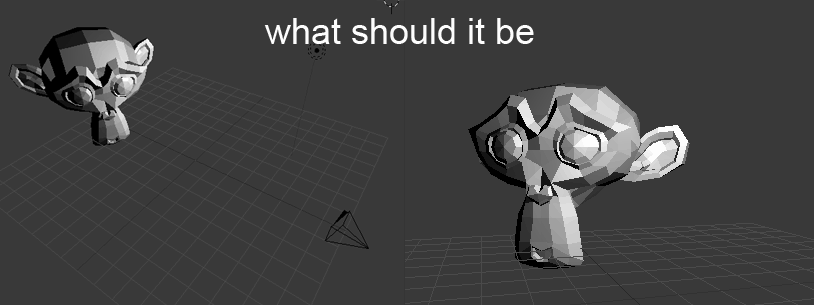Here above is my haXe implementation of head-tracking 3D, creating motion-parallax effect using Away3D 4. You can play with the live demo or grab the source.
This type of head tracking VR has been around for quite a long time. The first popular one should be Johnny Lee’s Wiimote hack, back in 2007, built in C# running as a desktop app. Two years later it appeared in the browser, a Flash version made by Mr. doob. But it was merely a hack and far from accurate comparing to Johnny Lee’s. Boffswana also created one in the same year (2009), and then an improved one with better head tracking algorithm. Sadly Boffswana hasn’t release the source.
Head tracking and camera movement is relatively simple, since there are so many libs for these. The tricky part is the perspective projection matrix. The projection point (the head), unlike most of the implementation assumption, isn’t always perpendicular to the projection surface (screen).
Simplest implementation would ignore the problem. It places a camera at the position of viewer’s head and render it to the screen, like what Mr. doob did. The problem is illustrated below.
When viewer’s head is perpendicular to the screen, everything is perfectly aligned:

However, when the viewer moves, for example to the left, there is misalignment of the rendering on screen and the “actual” position of the virtual object:

Knowing little about C#, it is hard for me to dig out Johnny Lee’s matrix code. I found the suitable code form the paper “Generalized Perspective Projection” from Robert Kooima. It is written in C++, but translating it to haXe isn’t hard, just remember matrix in OpenGL is column-major order but Flash’s is row-major order.
Head-detection is done using my fork of hxmarilena. My fork is simply some API changes and switching the XML parsing from flash.xml.XML to Xml so it may be used in C++ target in the future. In order to reduce jittering, I’ve included a simple optical flow tracking on the head. It is a block-matching process applied to four points on previous head detection result. The optical flow tracking result is merged to head-detection result by a ratio. It improved a bit, but I guess to address the problem it is better to port some better algorithms, like FaceTracker, in the future.
Finally, remember you can play with the live demo and it is open source.